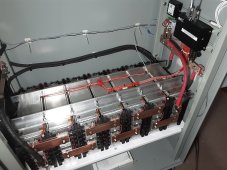SHTF Power Anyway
Power Pig
Update on battery BMS records:
I looked through 10 hours of data from Battery 5's BMS and could see only two incidents of the 0.50 unit current reading and it was only for a few seconds each time. I looked at all 9 other batteries to see if this draw changed the others but all I saw in all the reports were consistent -0.30 unit currents.
The team is still disconnecting batteries and trying to trace the voltage coming out of the bank when the whole bank is off.
I looked through 10 hours of data from Battery 5's BMS and could see only two incidents of the 0.50 unit current reading and it was only for a few seconds each time. I looked at all 9 other batteries to see if this draw changed the others but all I saw in all the reports were consistent -0.30 unit currents.
The team is still disconnecting batteries and trying to trace the voltage coming out of the bank when the whole bank is off.




